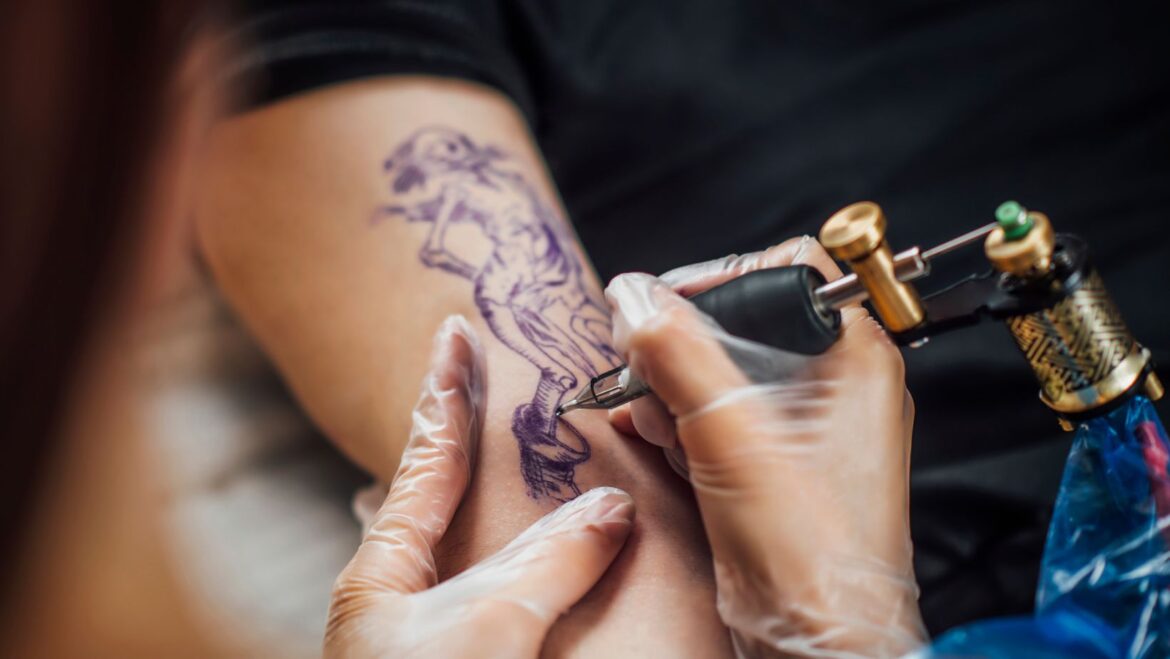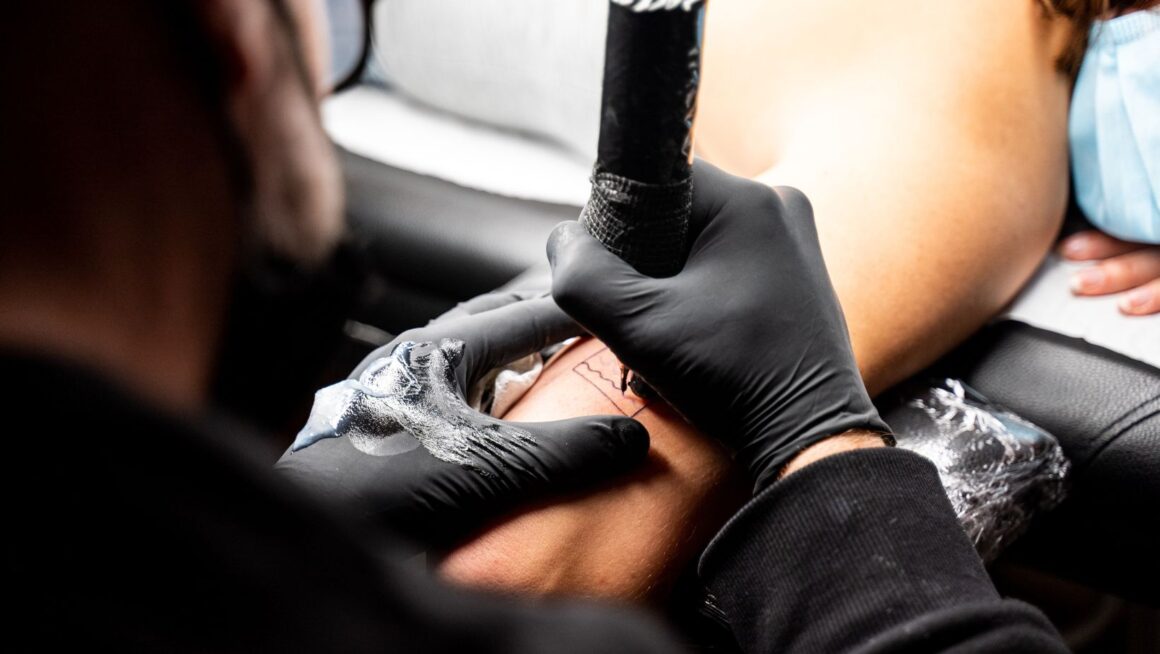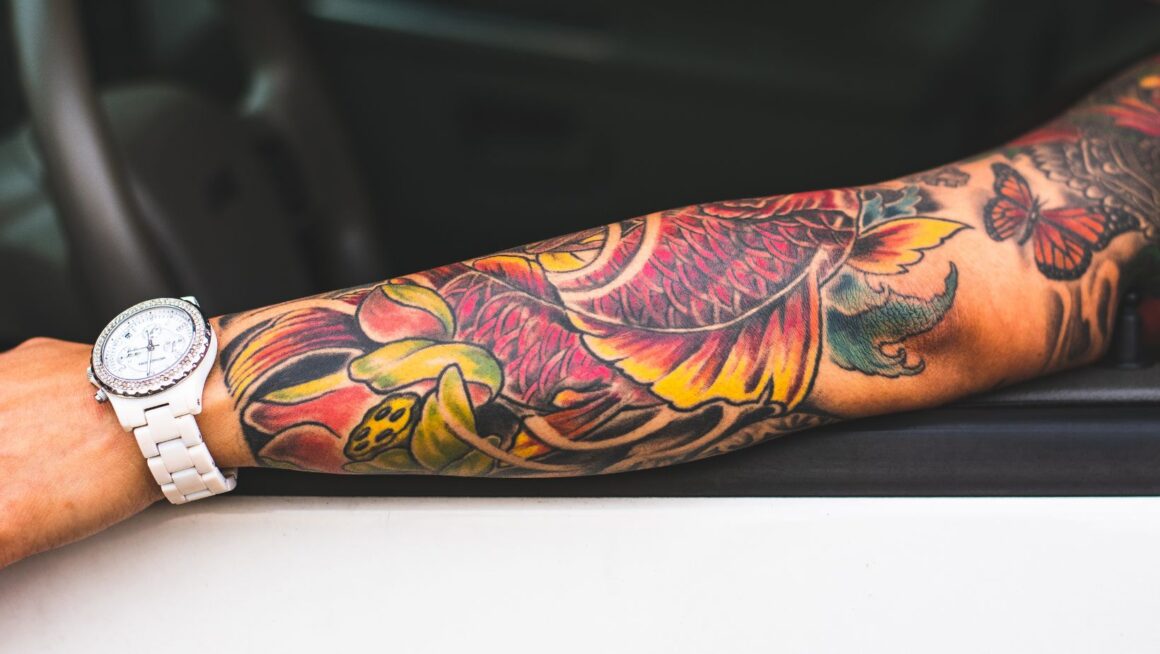Tattooing is a process that involves inserting ink into the dermis, and the characteristics of an individual’s skin can influence how the ink settles, heals, and appears over time. Skin types range from oily to dry, sensitive to resilient, and thick to thin, each requiring different approaches. For instance, oily skin tends to push ink out more easily, potentially affecting saturation levels. On the other hand, dry skin may be prone to flaking during healing, which can impact how the design retains its sharpness. Those with sensitive skin may experience prolonged redness and irritation, requiring additional aftercare measures to prevent complications. The thickness of a person’s skin also plays a role. Thicker skin, often found on areas like the back or thighs, may require deeper needle penetration, whereas thinner skin on the hands or neck can be more susceptible to blowouts. To ensure the design will heal properly, tattoo artists must assess these factors before starting a tattoo.
Another consideration is the presence of scars, stretch marks, or existing tattoos. Scar tissue can be unpredictable, sometimes absorbing ink unevenly or healing irregularly. Austin artists may need to adjust their techniques when tattooing over scars, using shading and line work strategically to create a smooth transition. Similarly, stretch marks can affect a design’s appearance, particularly if they are raised or vary in tone from the surrounding skin. Tattoo artists work around these elements by adapting their approach, sometimes choosing certain styles or placement techniques to ensure the final result is visually cohesive. Whether adjusting ink saturation, modifying needle depth, or guiding clients through the healing process, understanding skin types is critical to successful tattooing.
The Role of Skin Tone in Tattoo Ink Selection and Design
Skin tone plays a significant role in how a tattoo will look, as the ink sits beneath the epidermis, allowing the skin’s natural color to influence the final appearance. Lighter skin tones generally allow a broader range of colors to appear vibrant, as less natural pigmentation filters the ink. In contrast, darker skin tones may cause certain colors to appear more muted, leading tattoo artists to select pigments with greater opacity and contrast. Tattooing on darker skin often requires adjustments in design, focusing on bold linework, high-contrast shading, and strategic color choices to ensure the tattoo remains clear and vibrant over time.
Color selection is particularly important when working with different skin tones. For individuals with fair skin, pastels, and light colors show up well, allowing for delicate shading and intricate gradients. However, artists may opt for more saturated hues such as deep reds, oranges, and rich blues that maintain their intensity on medium to deep skin tones. Some lighter colors, such as yellow or white, may fade faster on darker skin or appear less prominent, so tattoo artists may use them more sparingly or in specific contexts to enhance contrast. Understanding how ink interacts with different skin tones is essential to achieving a long-lasting and visually appealing tattoo.
Another crucial aspect is contrast and line definition. Tattoo artists often emphasize bold outlines and solid black ink when designing tattoos for darker skin tones, ensuring the artwork remains legible over time. Fine-line tattoos have gained popularity and can work well on lighter skin but may be less visible on deeper skin tones without proper adjustment. Shading techniques are also effectively adapted to create depth, using gradients and negative space. By considering these factors, tattoo artists ensure that the final result is clear, aesthetically balanced, and tailored to the individual’s skin tone.
How Tattoo Artists Adapt Techniques for Different Skin Conditions
Tattooing is not just about applying ink; it also requires adapting techniques to suit individual skin conditions. People with skin conditions such as eczema, psoriasis, or vitiligo require careful consideration before getting a tattoo. In cases of eczema or psoriasis, tattoo artists generally advise against tattooing over active flare-ups, as the skin may react unpredictably, leading to poor healing or ink rejection. Placement and timing become crucial if a client has a history of these conditions but wants a tattoo. Tattoo artists may wait until the skin is stable and perform a small test tattoo to observe how the skin reacts before committing to a larger piece.
Vitiligo presents unique challenges because it causes patches of skin to lose pigment, resulting in an uneven base tone. Tattoo artists working with clients who have vitiligo may choose designs that integrate the natural variation in skin tone rather than trying to mask it entirely. Some individuals embrace their vitiligo as part of the artwork, incorporating patterns or shading techniques that complement the existing contrast in their skin. Additionally, those with keloid-prone skin, which is more common in individuals with deeper skin tones, must take extra precautions. Keloids are raised scars that develop from excess collagen production during healing. To minimize the risk, tattoo artists often use lighter pressure, avoid excessive trauma to the skin, and provide aftercare instructions to reduce the chances of raised scarring.
Tattoo artists work with diverse skin types and tones, adapting their techniques to ensure that every tattoo heals well and maintains its vibrancy. By understanding how oiliness, sensitivity, and melanin levels impact ink retention, they make informed choices about design, color selection, and placement. Whether working with scars, skin conditions, or variations in pigmentation, they use strategic approaches to create tattoos that complement each individual’s natural features. Proper aftercare and long-term maintenance further enhance the tattoo’s lifespan, ensuring it remains a lasting piece of art.






